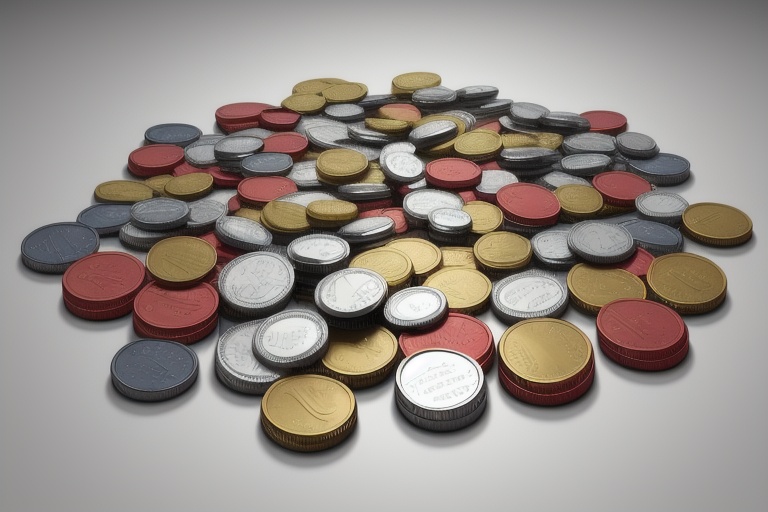Mint marks hold a special place in the hearts of coin collectors and historians because they offer a unique glimpse into the remarkable journey of a coin from its creation to its eventual place in a collection. These seemingly modest symbols or letters can transform an ordinary coin into a precious artifact that captures the essence of its era, its originating mint, and the story of how it came to being.
Mint marks hold a special place in the hearts of coin collectors and historians because they offer a unique glimpse into the remarkable journey of a coin from its creation to its eventual place in a collection. These seemingly modest symbols or letters can transform an ordinary coin into a precious artifact that captures the essence of its era, its originating mint, and the story of how it came to being.
Understanding Mint Marks
A mint mark, not to be confused with a mintmaster mark, is a distinguishing feature found on coins. It is usually a letter, symbol, or inscription that identifies the mint that produced the coin. The presence of a mint mark helps to locate the origin of the coin, much like a birthmark on a person signifies something intrinsic about their identity.
The Beginning of Mint Marks
The genesis of mint marks can be traced to the ancient world. Greek city-states were among the first to utilize mint marks, known as Magistrate Marks, which indicated the authority responsible for the coin’s issuance. These marks often took the form of symbols or icons, allowing for fast and easy identification of the mint and the magistrate.
In the Roman Empire, reform by Emperor Diocletian standardized mint marks, with the introduction of a system that encoded information about the coin’s value (Sacra Moneta, Moneta, or Pecurnia), the name of the mint (for example, ROM for Rome), and the workshop within that mint.
Mint Marks Through the Ages
As time marched on, the Byzantine Empire ceased the use of mint marks on their gold coins, but they remained a feature on copper coinage until the 7th century. By the time of Charlemagne, mint marks and mintmaster marks were mandatory on coins minted in France.
Medieval England also saw the use of mint marks, particularly in branch mints across the kingdom and as far-flung as Australia, Canada, South Africa, and India to denote coins originating from gold-rich regions.
The Significance of Mint Marks in Numismatics
In the numismatic sphere, mint marks offer collectors the chance to own a part of history. The publication of "A Treatise on Coinage of the United States Branch Mints" by A. G. Heaton in 1893 revolutionized the hobby by pointing to the scarcity and value of certain mint-marked coins. It sparked a collecting trend that continues to this day.
The Tale of US Mint Marks
The arrival of mint marks in the United States began in 1968 as a means to indicate coins produced outside of the Philadelphia Mint. P (Philadelphia), D (Denver), S (San Francisco), and W (West Point) remain the extant mint marks. Each one tells a story about where and sometimes why a coin was made.
There have been nine official US Mints. The Philadelphia Mint was the first, established in 1793. It was followed by multiple branch mints, each designated by their own mint mark. Notably, the West Point Mint only started marking its coins with the "W" for the 1984 Olympic gold coins, before which there was no mint mark to identify its production.
Exceptional cases include the omission of the mint mark from Philadelphia coins prior to 1980 (with the exception of war-time nickels and Susan B. Anthony dollars), and a limited run of W quarters in 2019 that marked "The Great American Coin Hunt," intended to spark public interest in numismatics.
Global Variations in Mint Marks
Different nations have different practices for mint marks. Some use initial letters of the mint cities like the US, while others, like Germany, use diverse symbols. Countries like Spain have even used star patterns and small dates to denote the mint and strike date, respectively.
Mint Marks in Modern Collecting
In today’s world of coin collecting, mint marks are recognized for their ability to indicate a coin's heritage and rarity. This has made them a valuable tool for numismatists, who now diligently seek coins with specific marks, knowing well that they often carry stories and significance that transcend their face value.
The Legacy of Mint Marks
The role of mint marks in the realm of coin collecting is a thread that weaves through time, offering us a window into the past. They are the fingerprints of mints and the hallmark of the coin-producing process, leaving an indelible impression on every coin they grace.
From their earliest days in ancient civilizations to modern times, mint marks have provided a wealth of information and added intrigue to the pursuit of coin collection. They allow collectors to piece together historical narratives and appreciate the craftsmanship and artistry that goes into coin production.
Mint marks, with their intricate connections to history, continue to be a cornerstone of numismatics. They mark the legacy of each mint and contribute to the ever-expanding tapestry of our collective heritage. For coin enthusiasts, they beckon us to explore the rich narratives embedded in each piece and to cherish the miniature, yet monumental, works of art that are the coins in our collections.
Information for this article was gathered from the following source.




